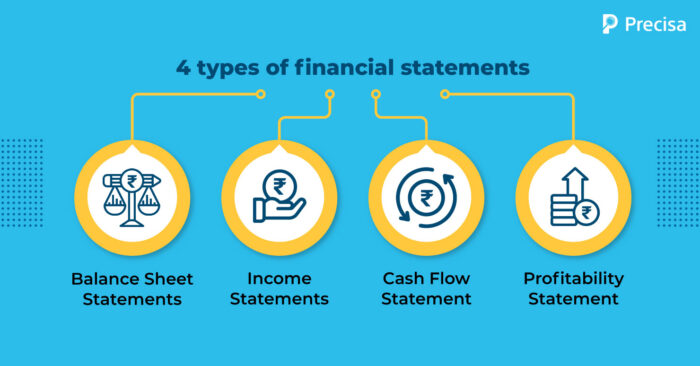Financial Data Analysis: Few Pointers for Making the Right Decision

The value of the global financial analytics market was at just $ 7.6 billion in 2020, and it is expected to grow at a compound annual growth rate of 10.3% and reach a volume of $19.8 billion by 2030. This indicates that financial data analysis is emerging as a pivotal function in many businesses today.
The BFSI sector dominates this list, followed by IT and telecom, manufacturing, retail and eCommerce, governments, and healthcare. In this blog, let’s understand how companies can bring more accuracy and efficiency to the analysis process and make insightful decisions that align with their business targets, goals, and vision.
Financial Data Analysis- Simplified
The demonstrated accuracy of comprehensive data-driven decision-making is driving businesses to prioritise the in-depth analysis of financial data. Rather than make decisions based on intuition, basic financial statements, or public hype, a company’s finances tell a more accurate story.
Financial Data Analysis is a comprehensive process that leverages in-depth insights into a company’s financial data to make critical decisions in several contexts. For instance, the breakdown of financial data will play a vital role in outcomes if a company is looking to access a business loan or undertake a merger. This process will help understand all the associated risks, rewards, and liabilities.
What is the Right Time to Leverage Financial Data Analysis?
Several companies of all sizes and scales are utilising financial analysis. Here are some common use cases:
- Credit lenders determine creditworthiness when giving loans
- Venture capitalists and angel investors, when investing in businesses
- During mergers and acquisitions
- Filing bankruptcy
- Developing future business plans
- Understanding how economic trends will impact business
- Setting up a financial policy framework
4 Major Types of Financial Statements
Decision-makers must consider four types of financial statements contributing to comprehensive financial data analysis when making impactful business decisions. For example:
1. Balance Sheet Statements
Analysis of balance sheet statements is often used to gauge the fiscal health of a business. For instance, when a company aims to take a business loan, a bank will use balance sheet statement analysis to determine the operational efficiency of a business. Key metrics such as assets, liabilities, and equity will be evaluated when evaluating balance sheet statements.
2. Income Statements
This is one of the most basic sources to understand a company or individual’s financial status. Entities such as banks, non-banking financial companies (NBFCs), and digital lenders take recourse to comprehensive income statement financial analysis to determine the creditworthiness of retail customers. One of the critical challenges faced by lenders is that speed, accuracy, and scale are less available, at which outcomes need to be driven.
3. Cash Flow Statement
Cash flow statement analysis paints an accurate picture of the spending habits of any entity. The three pillars of cash flow statements considered for comprehensive analysis comprise cash from operations, financing, and investing. If a business records a positive cash flow, it signifies positive fiscal health and increases the company’s creditworthiness.
4. Profitability statement
Profitability is an important metric to consider when companies look at major financial transactions such as investing, acquiring, or merging with a business. In-depth profitability analysis assesses ratios such as return on equity (ROE), net profit margin, tax liability, etc.
Some Key challenges to Financial Data Analysis
There are several challenges faced by businesses when executing financial analysis:
- Lack of ideal technology-enabled tools to handle seamless analysis functions, thus resulting in counterproductive events such as duplication, errors, and inaccurate analysis. On the other hand, manual interventions come with labour, effort, and time cost.
- The manual nature of the process and the enormous volume of statements to be analysed resulted in slowing down business processes and, in turn, the business outcomes.
- Businesses find it challenging to scale unless they build a good tech stack to bring scalability to operations.
How to Bring Efficiency to Financial Data Analysis?
The sheer volume of financial data available today is immense, and it would take many hours for human beings to shift through the data with in-depth attention to detail.
Leveraging spreadsheets is also no longer sustainable, as it can lead to duplication, errors, delays, and access problems. Also, while this can be performed manually through spreadsheets, it can quickly become messy and error-prone.
These are key reasons why financial entities are turning to automated, state-of-the-art fintech solutions to execute financial data analysis in a streamlined, efficient, and accurate manner every day.
Key Takeaway
Considering the challenges, a growing number of diverse businesses are turning to tech-enabled financial data analysis solutions like Precisa to bring efficiency, accuracy, and scale to their operations.
Presica’s comprehensive and seamless financial data analysis solution simplifies and speeds up the process through automation. The software provides actionable insights on a customisable dashboard, thus helping companies make informed business decisions.
Request a free demo today!




